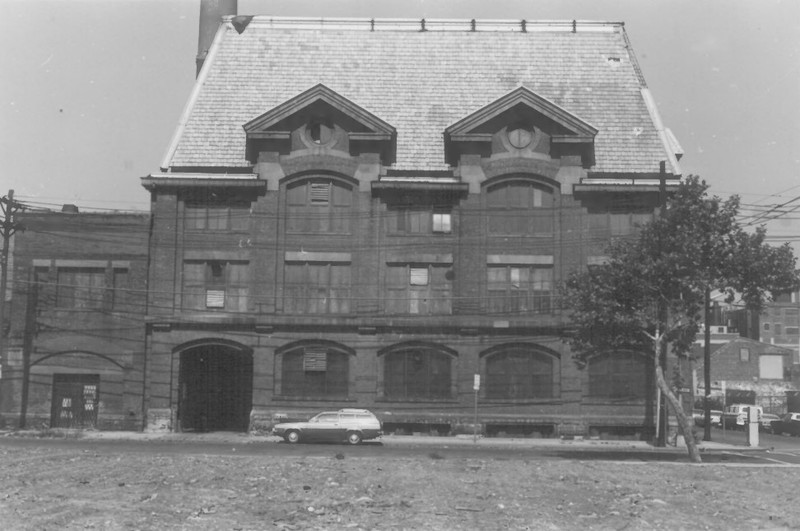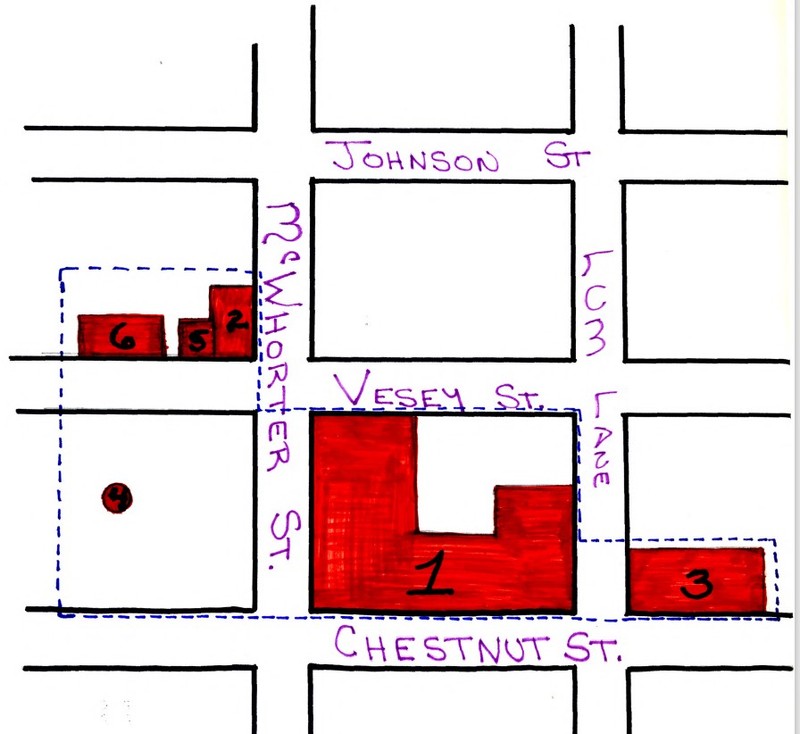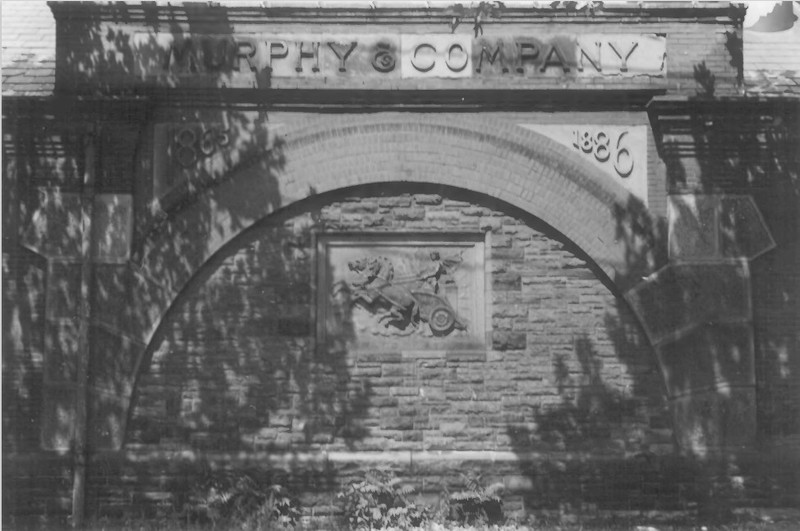Murphy Varnish Works
Introduction
Text-to-speech Audio
Images
Building #1 Chapman's warehouse along McWhorter St. in 1977 photo, looking NW (T. Karschner)

1922 newspaper ad for Murphy Varnish Co. products (Dyer Brothers Inc.)

Sketch of buildings in former varnish factory complex; #1 is Chapman's warehouse (N=bottom right, not to scale, Deluca et al. 1978)

Warehouse Bldg. #1 (green arrow in Chestnut St. pointing to N side) on 1929 update of Sanborn map (V. 1 p. 11)

Detail from Bldg. #1 warehouse facade: "MURPHY & COMPANY 1865 1886," facing NW (T. Karschner)

Three Murphy Varnish Works buildings along Vesey St. in 1977 photo, facing SE (T. Karschner)

Backstory and Context
Text-to-speech Audio
Franklin Murphy was a Newark native who served in the Civil War, and ended up as a First Lieutenant. Murphy founded Murphy Varnish Works in 1865 with James Barnet and Thompson Price. Murphy was the first businessman to be elected Governor of New Jersey; he held office from 1901 to 1905. Murphy was offered the post of U.S. Ambassador to Russia by President McKinley but declined. He was considered as a possible U.S. Vice Presidential candidate at the Republican Chicago convention in 1908 but lost. Murphy retired from the varnish company in 1915 and was succeeded by his son, Franklin, Jr., who had moved to Chicago to work in his father's newer varnish works there after graduation from Princeton University. The elder Murphy died at age 74 in 1920 due to poor health.
Newspaper ads from the early twentieth century touted the company's products across the U.S.: "Quality is Economy. In the Varnish World the Murphy name is a Guarantee. 'Murphy Varnish Company' on the can or on the label of any Finishing Material, settles the question of Value. It means that the Varnish, Color, Stain, Enamel, Konkreto, or whatever else, is the Most Reliable Product of the kind....The Varnish that Lasts Longest." The company got into some controversy in 1905 when the Automobile Club of America announced they were boycotting Murphy Varnish Works due to something Governor Murphy had said to the N.J. Legislature the previous year. Murphy had recommended passing a law that cars used in the state be geared to go no higher than twenty miles per hour. The club pointed out that the ex-Governor had recently purchased a 35-horsepower Cedauville car capable of speeds up to fifty miles per hour. Franklin Jr. defended his father, saying his father was trying to save life and limb from accidents due to speeding, which was already widespread (New Jersey drivers have a tradition of speed that lasts to this day).
The main buildings of the Newark factory were built over thirty years. A two-story Italianate style factory housed the company in the 1870s. In the following decade, three more buildings were added. Only the smokestack of one former building remains, drawn as Building #4 on a 1978 sketch (see the attached image) of the area being nominated to the National Register. The 1890s brought the construction of a firehouse building, Fire Station No. 14. The last major building, a massive warehouse (Building #1), was constructed in 1905 (this Clio entry). Unlike the previous five major buildings, the 1905 warehouse (Building #1) was designed by Howard Chapman. The building spans 225 to 239 McWhorter St. and 129 to 143 Chestnut St.; it features some brick walls 36 inches thick.
A local developer had admired the building for years, even though it had become dilapidated with trees growing inside, and vowed to own it one day. Javier Meliero did buy the building in 2016, and began renovations that lasted nearly three years. Meleiro managed to transform the building into 46 apartments and three commercial spaces while respecting the building's historic character, with the help of Newark's Studio for Urban Architecture & Design.
Sources
Anonymous. ""Auto" Club Boycott. Put on Varnish Because of New Jersey Governor's Speed Attitude." New York Tribune (New York, NY) March 13th 1905. 12-12.
Anonymous. "Governor's Son to Wed Settlement Worker." Daily Capital Journal (Salem, OR) September 10th 1908. 5-5.
Anonymous. "Ex-Governor Murphy Dead. Dies at Palm Beach at Age 74 Years." Perth Amboy Evening News (Perth Amboy, NJ) February 24th 1920. Last ed, 1-1.
Carter, Barry. It went from historic factory to contaminated mess..., NJ.com. June 19th 2019. Accessed January 20th 2021. https://www.nj.com/essex/2019/06/it-went-from-historic-factory-to-contaminated-mess-now-its-restored-and-renting-apartments.html.
Deluca, John. Flock, Joseph. McDonald, Thomas. NRHP Nomination of Murphy Varnish Works. National Register. Washington, DC. National Park Service, 1978.
Kofsky, Jared. Adaptive Reuse Project Will Transform Historic Newark Factory into Residences, New Jersey Digs. February 2nd 2017. Accessed January 20th 2021. https://jerseydigs.com/murphy-varnish-company-mcwhorter-street-newark-redevelopment/.
Murphy's Varnish Works. "Quality is Economy." Lincoln County Leader (Toledo, OR) January 24th 1913. 2-2.
https://npgallery.nps.gov/AssetDetail/NRIS/79001484
Evening Star, Washington, DC, April 8th 1922, p. 4
https://npgallery.nps.gov/AssetDetail/NRIS/79001484
https://www.loc.gov/item/sanborn05571_009.2/
https://npgallery.nps.gov/AssetDetail/NRIS/79001484
https://npgallery.nps.gov/AssetDetail/NRIS/79001484
